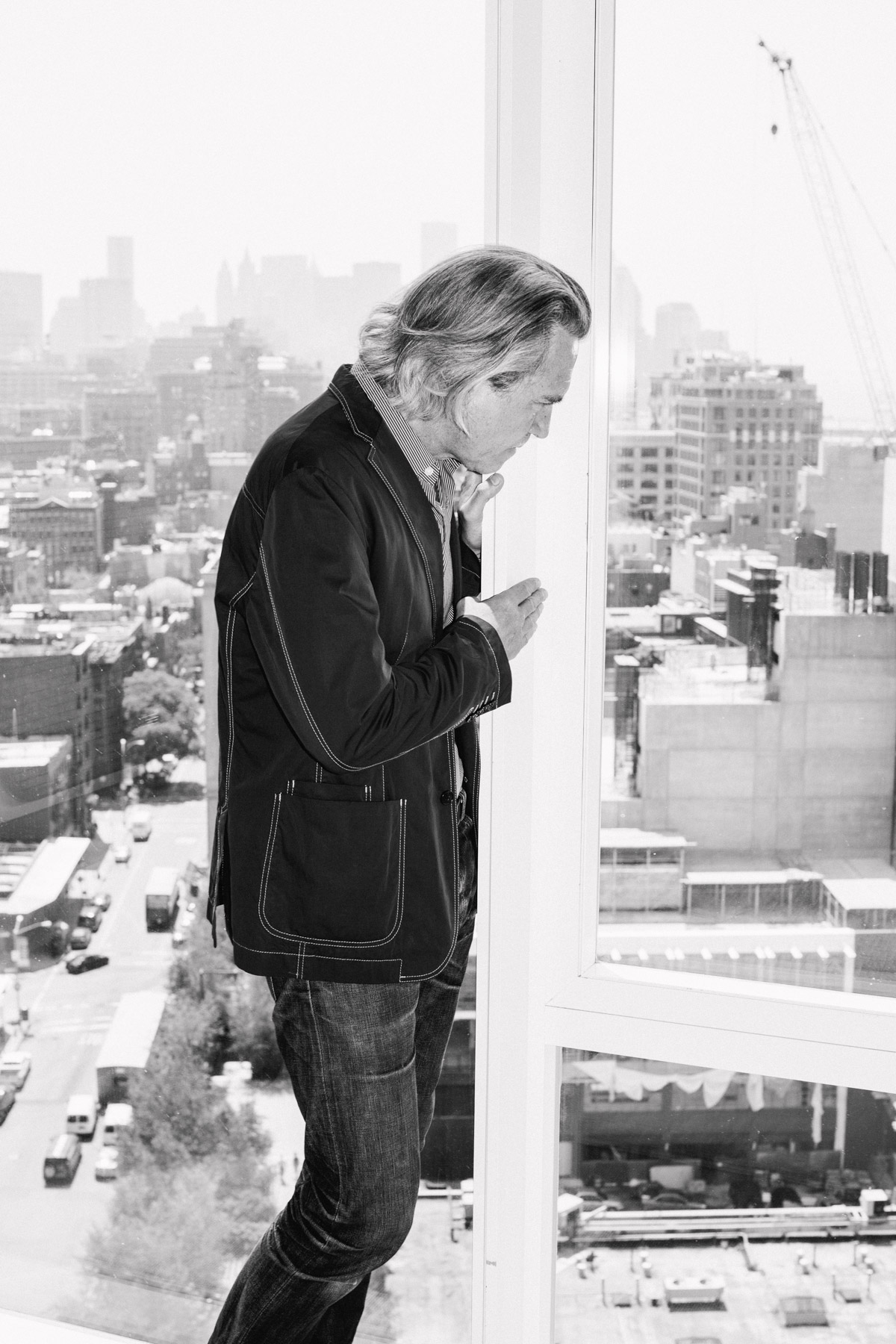
There are certain professions that seem almost immune to aging. You want an experienced doctor in the same way you want a pilot who’s taken to the air a few times. The creative industry seems to be a bit different: music and acting continue to prize youth over age save for a couple of notable exceptions. I would count architects and designers among them.
Matthew Hilton has been thinking hard about and crafting the most comfortable furniture for us to sit in, without sacrificing style, for more than 40 years. But he’s only been doing it under his own name — now a globally recognized furniture brand — for the last 11.
The steps that led there were equal parts preparation and skill development and one large dash of risk. “I thought, ’Look, I’ve got to get on with this,’ ” he told me. “ ‘I’m 50 years old, I’ve got maybe twenty years of work time left and I haven’t really done what I want to do.’ ”

As a youngster he spent time in Nigeria (his father’s work as a doctor took the family there) but he was raised in Portsmouth, on England’s south coast. Having had an interest in sculpture, Hilton always knew his future would involve making something. But in what form only hit him when he attended the renowned Kingston University in London and began focusing on furniture design. Clients such The Conran Shop and British furniture manufacturer SCP followed university.
The majority of his career was spent in the service of others. He’d had his own company since 1985, but never his own line. From 2000-2004, he was asked to join the furniture and lifestyle design company Habitat. It was upon winding up that gig that he began to realize time was ticking down.
It was time, as he put it, “to take things seriously.”
Drawing on a lifetime of accumulated reputation for quality in the industry, he made a risk-embracing leap—starting his own studio—which has turned into a smart bet. After a short time Hilton negotiated several favorable licensing agreements including with global furniture company De La Espada.
His design method has evolved with the times. The man who broke into the business by making models for architects and designers, now sketches out designs on an iPad before handing those sketches to colleagues who print out the renderings on a 3D printer.
But it’s at that point that Hilton has begun going back to working with the model by hand, the way he used to do it. We spoke at some length about the future of hand-made objects at a time when large-scale manufacturing has never been easier or cheaper.
“I would’ve thought that because there are always people who want to make things, that there would also be people who would want to own the things we make,” he says. “For years, there have been fantastically accurate watches that aren’t made by hand, and yet the hand-making watch business goes on. So there’s something there.”
There’s also the price of innovation. Hilton knows that his lines won’t be worth as much if he isn’t continually refining and re-evaluating his designs.
“I need to always be thinking about the future and trying to do things fresh,” he says. “I get out and see exhibitions. And I guess I’m just working on being aware that I need to do something new, and not repeat the same stuff. I’ve got to push myself the whole time.”
At 50, Hilton told himself he had about 20 years of a working life left. He’s beginning to rethink that.
“I still feel like I’ve got a load of things to do: I want to make sculptures, and I want to design another watch. So I’m not about to stop,” he says. “There’s some practical things, in that I haven’t really set myself up financially for stopping work. And I have a son. If I feel less inspired to make furniture I might withdraw myself from that part of the creative world and maybe do something else.”
The ideas expressed here are solely the opinions of the author and are not researched or verified by AGEIST LLC, or anyone associated with AGEIST LLC. This material should not be construed as medical advice or recommendation, it is for informational use only. We encourage all readers to discuss with your qualified practitioners the relevance of the application of any of these ideas to your life. The recommendations contained herein are not intended to diagnose, treat, cure or prevent any disease. You should always consult your physician or other qualified health provider before starting any new treatment or stopping any treatment that has been prescribed for you by your physician or other qualified health provider. Please call your doctor or 911 immediately if you think you may have a medical or psychiatric emergency.


